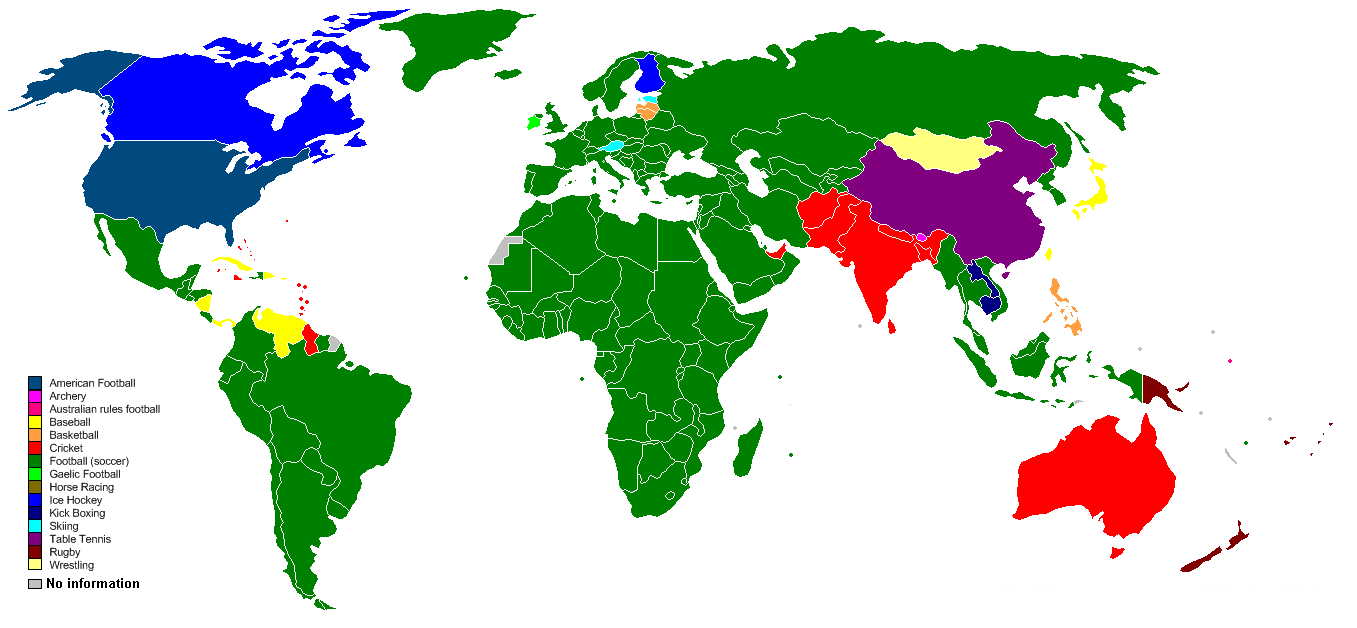Allowing Youth Sports to be Child's Play
Why Do Kids Play Sports?
 On February 12th, 2015, my American Sport in the 21st Century class discussed the topic of organized youth sport in America. An organized youth sport is an athletic league or team that promotes competition which includes individuals between birth and age of 18 years. Youth sport is the largest organized participation of over 47 million children. Why are there so many children that are interested in playing sport at a young age? Recent studies have been conducted to determine why children play sports, and why parents get their children into organized sports. The main reasons that children initially choose to play sports are to have fun, learn new skills, and make new friends. Parents, often times, look for sports to challenge their child, engage them in competition, and set winning as the goal (Nationwide Children's Hospital 2014 p.9). Having fun is the most important interest we discussed in class, but there were other benefits relating to these studies that we also mentioned in class.
On February 12th, 2015, my American Sport in the 21st Century class discussed the topic of organized youth sport in America. An organized youth sport is an athletic league or team that promotes competition which includes individuals between birth and age of 18 years. Youth sport is the largest organized participation of over 47 million children. Why are there so many children that are interested in playing sport at a young age? Recent studies have been conducted to determine why children play sports, and why parents get their children into organized sports. The main reasons that children initially choose to play sports are to have fun, learn new skills, and make new friends. Parents, often times, look for sports to challenge their child, engage them in competition, and set winning as the goal (Nationwide Children's Hospital 2014 p.9). Having fun is the most important interest we discussed in class, but there were other benefits relating to these studies that we also mentioned in class. Benefits of Youth Sports:
- Develops and maintains fitness
- Preparation for adulthood
- Opportunity to learn values
- Teaches interactive skills
- Provides opportunities for leadership
I know from experience of playing and coaching youth sport how children learn new skills and values that will prepare them for adulthood. However, from that experience their are also major problem growing in youth sport. In the article Allowing Youth Sports to be Child's Play summarizes the main issues in youth sport today. It has been recorded that physical activity is necessary for normal growth in children. Although, when the activity level becomes too intense, or excessive, within a short period of time, tissue breakdown and injury occur (Nationwide Children's Hospital 2014 p.9). Although injury is no the only concern in youth sport; experts have identified two factors responsible for determining whether youth sports are enjoyable or anxiety-filled for young participants. First is the quality of adult supervision and coaching. The second is the amount of pressure parents place on their children to perform (Nationwide Children's Hospital 2014 p.9). In class we covered all these major problems in youth sport today:
Major Problems In Youth Sport:
- Overemphasis on winning
- Pressures by significant others to achieve success
- Instilling unrealistic goals of stardom or professional status
- Overuse injuries/over training/burnout
- 1.35 million youths a year have serious injuries
In this video John O'Sullivan from TEDxBend discusses the issues in youth sport today, and how we can change those issues. He brings up topics that we have talked about in class about the benefits of children playing sports at a young age, and the problems occurring in youth sport.




